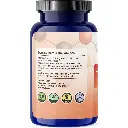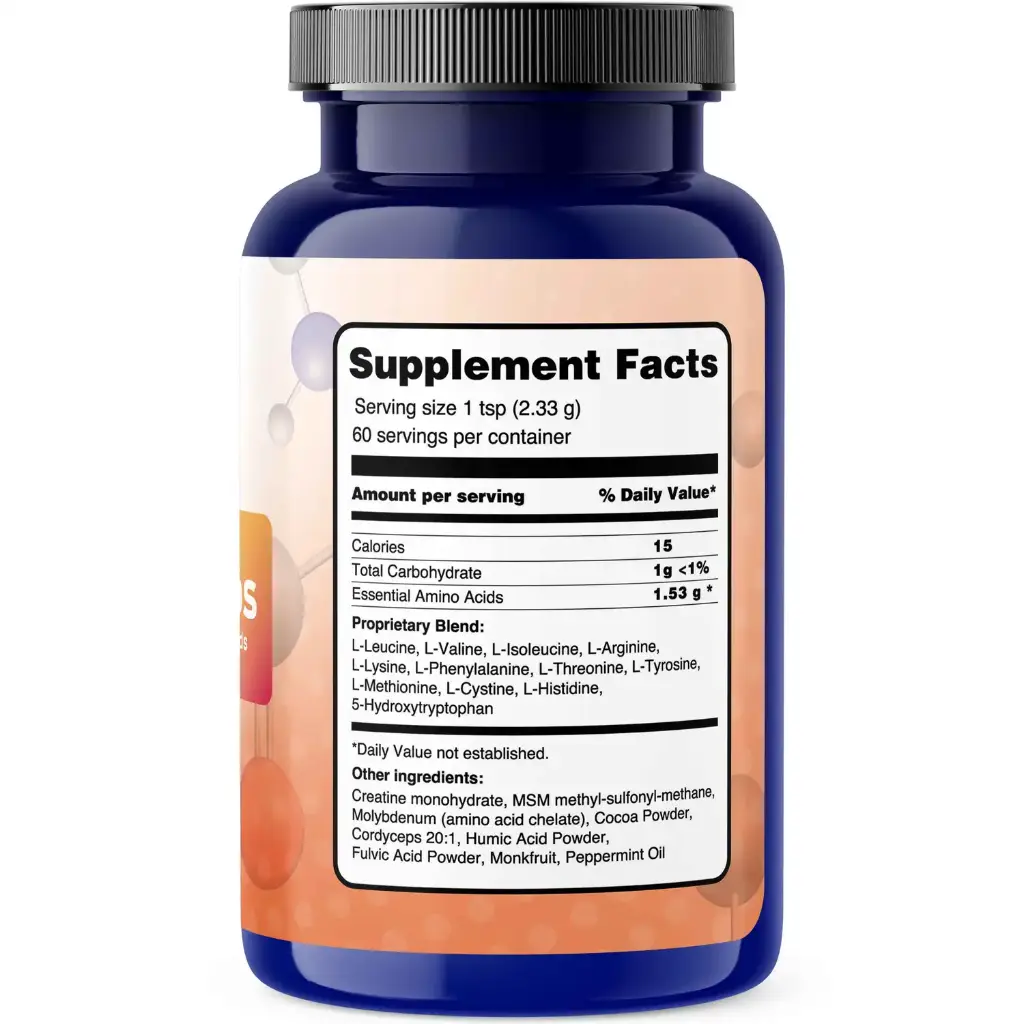- All Products
- TherAminos
TherAminos
https://life-enthusiast.com/shop/emcta-theraminos-3463 https://life-enthusiast.com/web/image/product.template/3463/image_1920?unique=5616ae8Essential Amino Acid Support for Muscle and Energy
- Aids Recovery After Exercise
- Boosts Energy and Immune System
- Optimizes Digestion
Terms and Conditions
30-day money-back guarantee
Shipping: 2-3 Business Days
- Supports Muscle Health: Provides essential amino acids crucial for muscle maintenance and vitality.
- Optimizes Protein Use: Helps ensure your body properly uses dietary protein for vital functions.
- Aids Recovery: Helps the body's natural process of recovery after activity and exercise.
- Boosts Energy: Contributes to efficient energy production for daily performance.
- Body Building Blocks: Supplies fundamental nutrients vital for protein synthesis and cellular function.
- Enhances Vitality: Supports overall physical well-being and sustained vigor.
- Supports Physical Comfort: Contributes to a feeling of greater ease and body comfort for daily activities.
- Enhances Nutrient Use: Aids in better nutrient absorption and proper utilization of dietary protein.
- Boosts Immune System: Helps support and strengthen your body's natural immune defenses.
- Replenishes Sulfur: Provides essential sulfur, vital for numerous bodily functions.
- Boosts Cellular Health and Energy: Helps activate natural enzymes and supports cellular vitality. Contributes to efficient energy production.
- Promotes Healthy Tissues: Contributes to the strength and appearance of your cartilage, skin, hair, and nails.
- Optimizes Digestion: Supports healthy digestive processes for inner balance.
- Aids Natural Cleansing: Supports your body's innate processes for maintaining a clean internal environment.
- Strengthens Tissues: Promotes the health and appearance of cartilage, skin, hair, and nails.
- Replenishes Sulfur: Provides this essential mineral crucial for numerous body processes.
- Supports Antioxidant Production: Helps your body naturally produce beneficial compounds like glutathione.
- Balanced Formula: A precisely balanced blend of essential amino acids for optimal synergy.
Fuel your body's vital functions with Exsula Minerals TherAminos, a premium supplement providing essential amino acids. These powerful building blocks are crucial for healthy muscles, energy production, and countless processes throughout your system.
TherAminos is designed to support your body's natural recovery after physical activity, helping to maintain muscle vitality and contribute to overall energy levels. By supplying these fundamental nutrients, our formula aids in promoting healthy protein synthesis, essential for your body's structure and function. Incorporate TherAminos into your daily routine to support physical performance and sustained well-being, for active individuals of all ages and lifestyles.
- High Quality Formula: Delivers premium amino acids for reliable daily support.
- For Active Lifestyles: Ideal for men and women of all ages seeking to optimize their body's performance.
- Easy to Use: Convenient supplement for seamless integration into your wellness routine.
Contains:
L-Leucine, Creatine monohydrate, MSM methyl-sulfonyl-methane, L-Valine, L-Isoleucine, L-Arginine, L-Lysine, , L-Phenylalanine, Cocoa Powder, L-Threonine, L-Tyrosine, Cordyceps 20:1, L-Methionine, Molybdenum (amino acid chelate), Humic Acid Powder, L-Cystine, L-Histidine, 5-Hydroxytryptophan, Fulvic Acid Powder, Monk fruit, Peppermint Oil
| Ingredient | mg/teaspoon |
| L-Leucine | 450 |
| Creatine monohydrate | 400 |
| MSM methyl-sulfonyl-methane | 400 |
| L-Valine | 390 |
| L-Isoleucine | 350 |
| L-Arginine | 340 |
| L-Lysine | 320 |
| L-Phenylalanine | 290 |
| Cocoa Powder | 260 |
| L-Threonine | 250 |
| L-Tyrosine | 220 |
| Cordyceps 20:1 | 200 |
| L-Methionine | 160 |
| Molybdenum (amino acid chelate) | 160 |
| Humic Acid Powder | 150 |
| L-Cystine | 120 |
| L-Histidine | 110 |
| 5-Hydroxytryptophan | 100 |
| Fulvic Acid Powder | 30 |
| Monk fruit | 20 |
| Peppermint Oil | 20 |
Directions for Use
Take 1-5 teaspoons (5 ml) once or twice per day, on an empty stomach, 20-30 minutes before eating. You can take it with water, juice, or a simple smoothie.
Maintenance Dose:
Take 1-2 teaspoons/day in divided doses, on an empty stomach
Intensive Care Dose:
Take 2-4 teaspoons/day in divided doses, on an empty stomach
Recommended Use
Support for muscle energy and recovery after exercise. Boosts energy and immune system. Optimizes digestion.
Contraindications
Caution to Phenylketonurics:
CONTAINS PHENYLALANINE. Do not use if you have phenylketonuria, if you're pregnant or nursing, or taking medications, or have Parkinson's Disease. Consult with a physician before using this product. Use of phenylalanine should be limited to less than 2 grams/day.





